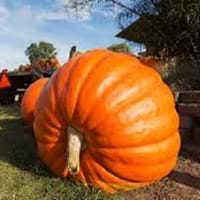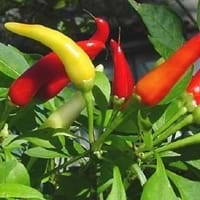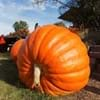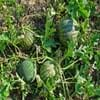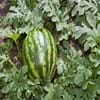Origin
South America
Mexico, Central America, South America
Types
Not Available
Not Available
Habitat
gardens, Moist Soils
Open areas
USDA Hardiness Zone
Not Available
Not Available
Sunset Zone
A1, A2, A3, H1, H2, 1a, 1b, 2a, 2b, 3a, 3b, 4, 5, 6, 7, 8, 9, 10, 11, 12, 13, 14, 15, 16, 17, 18, 19, 20, 21, 22, 23, 24
A1, A2, A3, H1, H2, 1a, 1b, 2a, 2b, 3a, 3b, 4, 5, 6, 7, 8, 9, 10, 11, 12, 13, 14, 15, 16, 17, 18, 19, 20, 21, 22, 23, 24
Habit
Vining/Climbing
Upright/Erect
Flower Color
Yellow, Gold
White, Light Yellow, Ivory
Flower Color Modifier
Bicolor
Bicolor
Fruit Color
Yellow, Orange
Red, Green, Dark Green
Leaf Color in Spring
Green, Light Green
Green
Leaf Color in Summer
Green, Dark Green
Dark Green
Leaf Color in Fall
Green, Dark Green
Dark Green, Black
Leaf Color in Winter
Not Available
Dark Green
Leaf Shape
Heart-shaped
Elliptic
Plant Season
Summer, Fall
Spring, Summer, Fall
Sunlight
Full Sun
Full Sun
Growth Rate
Very Fast
Medium
The pH of Soil
Neutral
Neutral
Soil Drainage
Well drained
Well drained
Bloom Time
Indeterminate
Indeterminate
Tolerances
Drought
Drought
Where to Plant?
Ground
Container, Ground, Pot
How to Plant?
Seedlings
Seedlings, Transplanting
Plant Maintenance
Medium
Medium
Watering Requirements
Keep the ground moist but not water-logged, Requires consistently moist soil, Requires regular watering, Requires watering in the growing season, Water in the early morning hours
Do Not over Water
In Summer
Lots of watering
Lots of watering
In Spring
Moderate
Moderate
In Winter
Average Water
Average Water
Soil Drainage Capacity
Well drained
Well drained
Sun Exposure
Full Sun
Full Sun
Pruning
Prune after flowering
Remove damaged leaves, Remove dead branches, Remove dead leaves
Fertilizers
Apply 5-10-5 amounts, Nitrogen, Phosphorous, Potassium
All-Purpose Liquid Fertilizer
Pests and Diseases
Red blotch
fungus, Verticillium Wilt, Viruses
Plant Tolerance
Drought
Drought
Flowers
Showy
Insignificant
Flower Petal Number
Single
Single
Foliage Texture
Coarse
Medium
Foliage Sheen
Matte
Glossy
Attracts
Beetles, Bugs
Not Available
Allergy
Asthma, breathing problems, Itchiness, Nasal Congestion, Swelling, Swelling in the face
Hives, Rash
Aesthetic Uses
Not Used For Aesthetic Purpose
Showy Purposes
Beauty Benefits
Good for skin and hair, Not Available, Skin cleanser, Skin Problems
Not Available
Environmental Uses
Air purification
Air purification
Medicinal Uses
Anemia, Antibacterial, anti-cancer, cholesterol-lowering, Fertility, High blood pressure, Immunity, Liver problems, Prevention of convulsion, Regulates Blood Sugar
Diphtheria, Gout, Malignant Scarlet Fever, Paralysis
Part of Plant Used
Fruits, Leaves, Seeds
Fruits
Other Uses
Used As Food, Used as Ornamental plant, Used for its medicinal properties, Used in salads
Used As Food
Used As Indoor Plant
No
No
Used As Outdoor Plant
Yes
Yes
Garden Design
Edible, Herb / Vegetable
Container, Edible, Herb / Vegetable, Tropical
Botanical Name
CUCURBITA maxima 'Atlantic Giant'
CAPSICUM annuum 'Serrano'( Longum Group)
Common Name
Atlantic Giant Pumpkin, Pumpkin
Hot Chili Pepper, Serrano Pepper
In Hindi
कद्दू
Serrano Kali Mirch
In German
Kürbis
Serrano Pfeffer
In French
Citrouille
Piment serrano
In Spanish
Calabaza
Chile serrano
In Greek
Κολοκύθι
Serrano pepper
In Portuguese
Abóbora
Serrano pimenta
In Polish
Dynia
Serrano pieprz
In Latin
cucurbita
Serrano piperis
Phylum
Magnoliophyta
Anthophyta
Class
Magnoliopsida
Not Available
Family
Cucurbitaceae
Solanaceae
Clade
Angiosperms, Eudicots, Rosids
Asterids, Eudicots
Tribe
Cucurbiteae
Capsiceae
Subfamily
Cucurbitoideae
Solanoideae
Number of Species
Not Available
Properties of Giant Pumpkin and Serrano Pepper
Wondering what are the properties of Giant Pumpkin and Serrano Pepper? We provide you with everything About Giant Pumpkin and Serrano Pepper. Giant Pumpkin doesn't have thorns and Serrano Pepper doesn't have thorns. Also Giant Pumpkin does not have fragrant flowers. Giant Pumpkin has allergic reactions like Asthma, breathing problems, Itchiness, Nasal Congestion, Swelling and Swelling in the face and Serrano Pepper has allergic reactions like Asthma, breathing problems, Itchiness, Nasal Congestion, Swelling and Swelling in the face. Compare all the properties and characteristics of these two plants. Find out which of these plant can be used as indoor plant. If you are interested to decorate your house and garden, find out aesthetic uses, compare them and select the plant which will beautify your surrounding. Along with beautification, try comparing medicinal and edible uses of Giant Pumpkin and Serrano Pepper and you can choose the plant having best and most benefits.
Season and Care of Giant Pumpkin and Serrano Pepper
Season and care of Giant Pumpkin and Serrano Pepper is important to know. While considering everything about Giant Pumpkin and Serrano Pepper Care, growing season is an essential factor. Giant Pumpkin season is Summer and Fall and Serrano Pepper season is Summer and Fall. The type of soil for Giant Pumpkin is Loam and for Serrano Pepper is Loam while the PH of soil for Giant Pumpkin is Neutral and for Serrano Pepper is Neutral.
Giant Pumpkin and Serrano Pepper Physical Information
Giant Pumpkin and Serrano Pepper physical information is very important for comparison. Giant Pumpkin height is 30.00 cm and width 500.00 cm whereas Serrano Pepper height is 60.00 cm and width 45.70 cm. The color specification of Giant Pumpkin and Serrano Pepper are as follows:
Giant Pumpkin flower color: Yellow and Gold
Giant Pumpkin leaf color: Green, Light Green
Serrano Pepper flower color: White, Light Yellow and Ivory
- Serrano Pepper leaf color: Green
Care of Giant Pumpkin and Serrano Pepper
Care of Giant Pumpkin and Serrano Pepper include pruning, fertilizers, watering etc. Giant Pumpkin pruning is done Prune after flowering and Serrano Pepper pruning is done Remove damaged leaves, Remove dead branches and Remove dead leaves. In summer Giant Pumpkin needs Lots of watering and in winter, it needs Average Water. Whereas, in summer Serrano Pepper needs Lots of watering and in winter, it needs Average Water.
